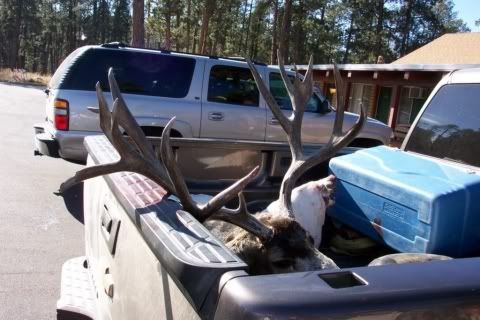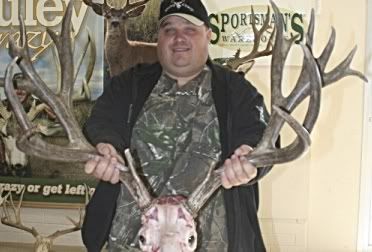deer pic
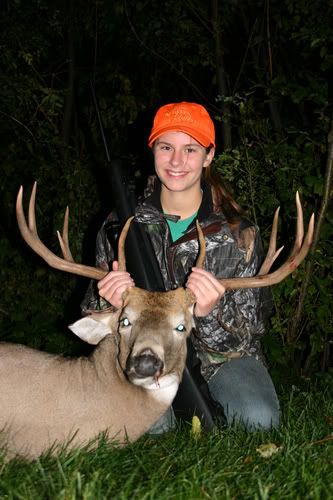

Must have a license to apply for a point
Basic hunting or combination licenses are required for additional permits.
Some hunting changes went into effect in Utah this year. One of those changes requires you to buy a hunting license or a combination license before you can apply for a hunting permit.
In addition to accepting applications for big game permits, the Division of Wildlife Resources is also accepting applications for bonus points and preference points.
But just like big game permits, you must have a valid Utah hunting or combination license before you can apply for a point.
“This change is important to the future of the state’s wildlife,” says Jim Karpowitz, director of the DWR. “As costs continue to rise, the requirement that hunters buy a license before they apply will provide us the revenue we need to continue managing big game and other wildlife into the future.”
Karpowitz has some advice for you as you decide which license to buy: the hunting license, which costs $26 for residents, or the combination license, which costs $30. “I’d encourage you to buy the combination license,” he says. “It costs $4 more than a hunting license, but it also allows you to fish.”
Hunting and combination licenses are available at wildlife.utah.gov. You can also obtain one from DWR offices and more than 350 hunting license agents across Utah.
Apply for a point by Feb. 29
Bonus points and preference points give hunters who won’t be hunting this year a better chance at obtaining a permit next year.
Applications for a bonus point or a preference point will be accepted until Feb. 29. You can apply for a point through the Internet (wildlife.utah.gov) until 11 p.m. on Feb. 29.
You can also apply over the phone at (801) 538-4700. Phone-in applications for a point must be received no later than 5 p.m. on Feb. 29.
For more information, call the Utah Wildlife Administrative Services office at 1-800-221-0659, the nearest Division of Wildlife Resources office or the DWR’s Salt Lake City office at (801) 538-4700.
————————————-
Why the change?
This change was made to raise more revenue by spreading the cost of wildlife management out more equally among everyone. Here’s one example of why the extra funding is needed:
Costs for habitat projects, surveys and management, and law enforcement have grown considerably over the past few years. On Utah’s limited entry units, the cost to manage the unit is usually higher than the amount of money brought in through the few permits that are sold for the unit and all of the application fees collected for the unit.
Because only a few permits are offered for these units, simply raising the cost for the permits would still not provide the funding needed to manage these units effectively. The DWR had to find new ways to generate funding to continue offering quality hunting in Utah.
In the past, paying $5 to try and draw a big game permit was the only financial contribution many people made to Utah’s wildlife. Now everyone must buy a hunting or combination license before they can apply for or obtain a hunting permit. The DWR believes this is a fair way to spread the cost of wildlife management out among all sportsmen.
In addition to allowing you to apply for a permit, a hunting license allows you to hunt small game in Utah. And a combination license allows you to hunt small game and fish. If you’re a nonresident big game hunter, the DWR realizes your primary focus is on larger animals, but we encourage you to try Utah’s excellent small game hunts and blue-ribbon fisheries as you travel the state this year.
Which license should I buy?
There’s only a slight difference between the cost of a hunting license, which allows you to hunt small game, and a combination license, which allows you to hunt small game and fish.
Residents can buy a hunting license for $26; a combination license costs $30.
Nonresidents can buy a hunting license for $65; a combination license costs $80.
How will the DWR use the new funding?
The following are some of the ways the new funding will benefit sportsmen and wildlife:
Other benefits
If you have comments or questions, please send them to DWRcomment@utah.gov.
This buck was killed in November in Central Utah
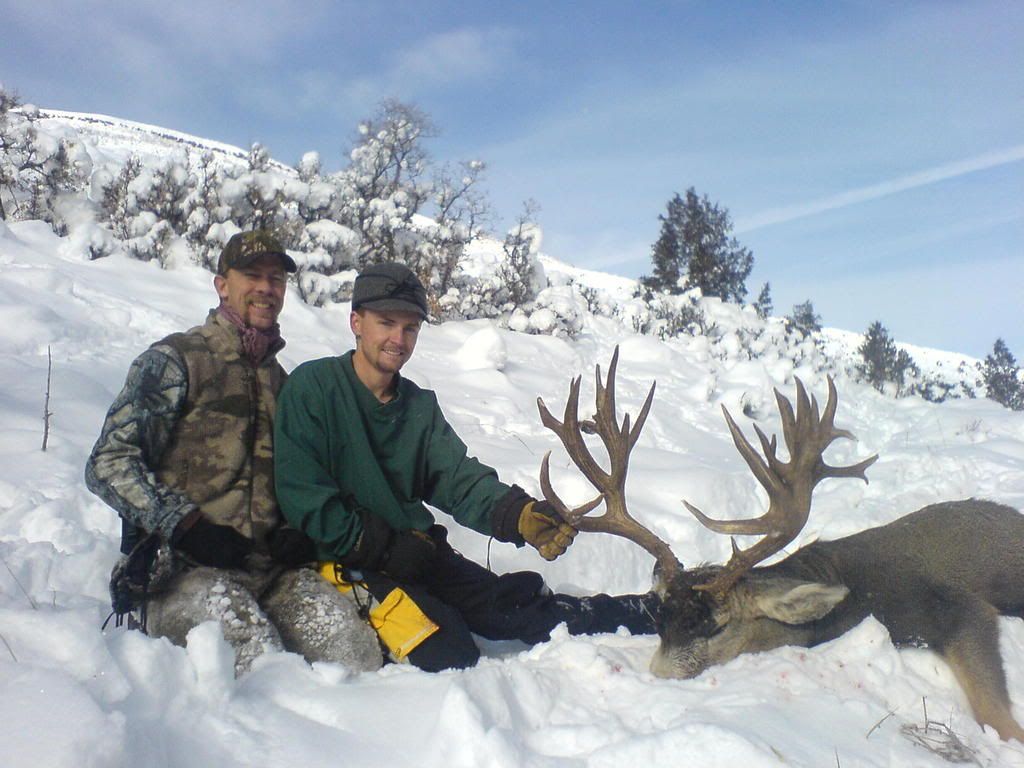
This is the mission statement of an organization called Western Wyoming Mule Deer Alliance ( www.muley.org ). Hopefully, they will re-think their solutions. It would be much better to reduce predators than to reduce hunters. They might as well join the anti-hunters. When an organization, no matter how insignificant, espouses what an agency wants to hear, policies get implemented as if they were the desire of the entire hunting community. Say what the agency doesn’t want to hear, and no matter how correct, you will be ignored.
I believe the Wyoming Game and Fish receives an annual operating budget from the state regardless of the amount of money that is generated by WGnF sales, fines, and fees.
——————————————-
Mission Statement
Our goal is to provide information to Wyoming sportsman regarding the overall health and viability of the states’ western deer herds. We hope through our efforts and with the help of supporters to enhance and improve both the quality and quantity of the mule deer herds in Western Wyoming. Whether it’s human population increase, oil and gas development, drought, loss of habitat or severe winters our deer herds are in serious jeopardy. While there may be disagreement as to the exact causes, we believe a change in management strategy is necessary. We believe management changes to address this issue are inevitable and should occur now rather than after it becomes an even more critical concern to Wyoming wildlife managers and sportsman. Therefore we are proposing a significant reduction in both resident and non-resident deer hunting licenses. To accomplish this, we need to begin a limited quota license for deer hunting in the western part of Wyoming. And to protect our hunting heritage we believe that resident youth should still be able to purchase a general deer hunting license over the counter. Also non- resident hunters should make up the larger percentage of the financial shortfall this would cause the Wyoming Game and Fish Department.
How we plan to accomplish our goal.
We propose the following changes be made in the hunt areas as follows:
(130, 138-142, 146, 149-156, 162, 135, 143-145, 132-134, and 168):
Reduce resident and non-resident deer licenses by 50%. Resident youth age 12-17 years old would be able to obtain a general license each year to hunt any and all of the included game areas.
Use the current game and fish system of preference points when applying for a deer license.
Keep the Wyoming Game and Fish Department revenue number the same by increasing non-resident license fees by approximately $100.00 and starting a Deer Management Permit costing approximately $10.00-$12 .00 for the included game hunt areas .
Organization name: Western Wyoming Mule Deer Alliance
Excerpts from Lance Frazier’s article in the Daily Harold — Newell Fredrickson doesn’t enjoy killing coyotes. It’s just something he does to earn a living.
In 40 years with Wildlife Services — the branch of the U.S. Department of Agriculture charged with removing problem predators — Fredrickson has trapped and shot all sorts of animals, crashed in helicopters half a dozen times, roped eagles and seen a lot of country. But the large majority of his job these days focuses on one thing: killing coyotes. Folks with Wildlife Services (formerly Animal Damage Control) tend to tiptoe when discussing their work. The Utah Wildlife Services Web page states that “Utah WS is uniquely positioned … to assist livestock producers, industries and our cooperating agency partners with wildlife damage issues. Professional wildlife biologists and trained technicians provide direct assistance (their emphasis) when wildlife damage requires special skills … .” Fredrickson, on the other hand, doesn’t trade in euphemisms.
“That old coyote supported me for 40 years and let me be as free as a bird on the wing,” Fredrickson says. “He’s my brother, but that don’t mean I won’t kill him.”
Which is not to say that he does it for fun or, as some people imagine, that he guns down every coyote he sees: “I ain’t going out there to see how many I can kill.”
The Hyrum resident targets offending animals in specific areas, answering calls from ranchers and sheepherders after they lose livestock to suspected wild predators. And he knows that his solutions, final as they may be for the targets, are a temporary fix at best, since coyotes reproduce rapidly.
“You take ’em out and maybe you’re OK for a couple of months,” he says.
Over the ensuing decades he’s been responding to complaints from operators, who agree not to take matters into their own hands with poison or bullet if the government will send someone to take care of their livestock depredation problems.
……. Those helicopter flights, as well as the fixed-wing flights the Service occasionally utilizes, are forays to look for coyotes, which are often shot from the air. It’s an image some find appalling, and Fredrickson can understand why. He doesn’t define his job as coyote-killing, but as saving mule deer and sage grouse.
His approach is practical: Coyotes kill deer, so if you want more deer you have to reduce the number of coyotes, and livestock are in the mix too. Two years back he killed 66 coyotes that were right in the middle of a deer herd near Hardware Ranch. It was the sort of thing sportsmen, eager to see more and bigger bucks, clamor for.
“It’s not the world of Walt Disney,” Fredrickson says, “and that deer isn’t Bambi.”
Yet he believes that if you destroy wild things, “you destroy an important part of nature.” He’s even undergone a bit of an Aldo Leopold-like transformation, having given up hunting a few years back after a lifetime of venison steaks. When deer sneaked in last winter to munch on his haystack, Fredrickson declined to fence them out. “I lived off them long enough, now they can live off me,” he says.
Still there’s the job to do, so on a brisk December morning he drives to Brigham City, where a sheep owner has been losing lambs. At first Fredrickson figures dogs did the damage, but after investigating he decides it looks like the work of coyotes. Problem is, the property is smack on the highway, with houses in every direction. Not a safe place to fire a bullet, even if he could call the coyotes down from the foothills during daylight.
He decides to check out the Box Elder County side of the Wellsvilles, where the coyotes have been heard to howl. After a steep, half-hour scramble, he’s in position under a cedar tree, with a slight breeze in his face and a clear field of fire. He calls, using general yapping, distressed rabbit squeals and challenging barks to lure the coyotes. But only farm dogs and domestic geese respond, and after an hour he packs it in. The entire time is spent just above houses and highway, illustrating the proximity of urban and wild. Demand for his services is also slowly declining as fewer ranchers run sheep.
When he does make a successful shot with his coyote gun –the age-worn .243, with the black fabric on the barrel to block reflection, was given to him by his father’s only brother — Fredrickson pats the stock and says, “Guess we did it again, Uncle.” That doesn’t happen on this day, which ends at a greasy spoon on Brigham City’s main drag. The waitress greets Fredrickson, who’s wearing a dark Stetson adorned with a pin of a howling coyote, with a hug as she says to an observer, “I don’t like what he does.”
It’s an attitude Fredrickson understands and respects, even if it feels as foreign as the computer, cell phone and 4-wheeler that are his new-age tools of trade.
“I’m more scared of John Public” and political pressure than anything else, he says over a burger and a cup of black coffee. “I used to wear the white hat. Now I wear a black hat.”
In fact his job has become more difficult, and not only because of ever-increasing public disapproval. The coyotes themselves — agents also deal with cougars, bears and wolves, but around here it’s almost always coyotes — are becoming more canny. Thirty years ago, Fredrickson says, a guy could call them in without half trying. These days the animals are more wary, especially if they’ve been shot at before, making it that much harder for the next hunter.
He has no plans to retire, but the writing on the wall indicates that his job, like the coyote’s home ground, is becoming marginalized. As he ponders the future, he lapses into cowboy poetry.
“My race toward the sunset is a high and lonesome kind,” he says. “Like the coyote, I don’t leave no tracks.”
This story originally ran in The Herald Journal
Animal falls through ice and is rescued in Northern Utah.

Feed mule deer
Donations to help feed mule deer on Colorado’s Gunnison Basin are being sought by the Mule Deer Foundation.
Heavy snow and cold weather have created harsh conditions, preventing mule deer from reaching their normal winter food sources. The Colorado Division of Wildlife began feeding them Jan. 13 at 60 emergency sites.
A $50.00 donation will feed 15 to 18 deer for a week. To help, go to www.muledeer.org or call 888-375-3337.
Wolf re-introduction is certainly a hot topic, to put it mildly, and Mule Deer Fanatics have a stake in the outcome. In Wyoming and Idaho, wolves are beginning to take a heavy toll on game animals, not to mention livestock. 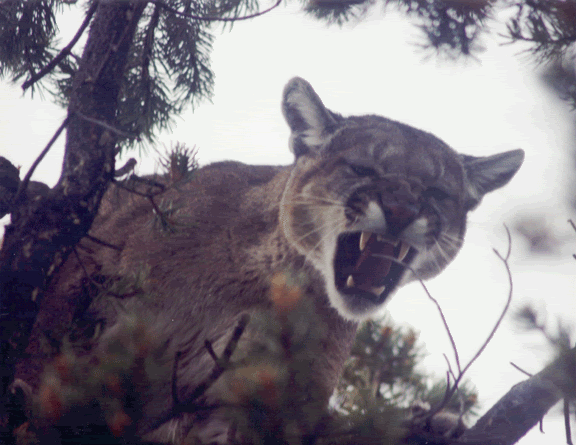 Since there are already relatively few mule deer available (due to the effects of lions and coyotes), elk populations are suffering most, but wolves will make it impossible for mule deer to recover, even if lions, coyotes, and bears were controlled.
Since there are already relatively few mule deer available (due to the effects of lions and coyotes), elk populations are suffering most, but wolves will make it impossible for mule deer to recover, even if lions, coyotes, and bears were controlled.
I am certain that some agency personnel have long awaited the time when elk populations could be regulated by grizzlies and wolves, as opposed to being regulated by hunters, as the predator approach seems to be their preference with mule deer.
Much of the human population in Wyoming is rural/ranchers. These poor folks are small in number, and battling the Federal Government takes a lot of moxie even when there is security in numbers. Nevertheless, Wyoming-ites are trying. Nearby states, where there are presently no wolves, have also been heavy-handed into drafting wolf management plans acceptable to the Feds, and will be expected to handle the wolves with care when they do arrive.
Not too far away, in Washington State, is a “non-profit” organization called Wolf Haven, where you can adopt a wolf. Just send money and you will recieve a photo of your very own wolf. There you may find tributes to deceased wolves, wolf and coyote tours, and articles such as “The coyote that refused to eat meat.”
Quote: You can ‘adopt’ any of our wolves on-line for yourself or as a gift for a friend or loved-one. Proceeds from our symbolic wolf ‘adoption’ program provide the wolves with the very best of food, medical care, dietary supplements, habitat maintenance and enrichment.
The animal huggers are berserk, but are still taking in collections to support their cause.
———————————————
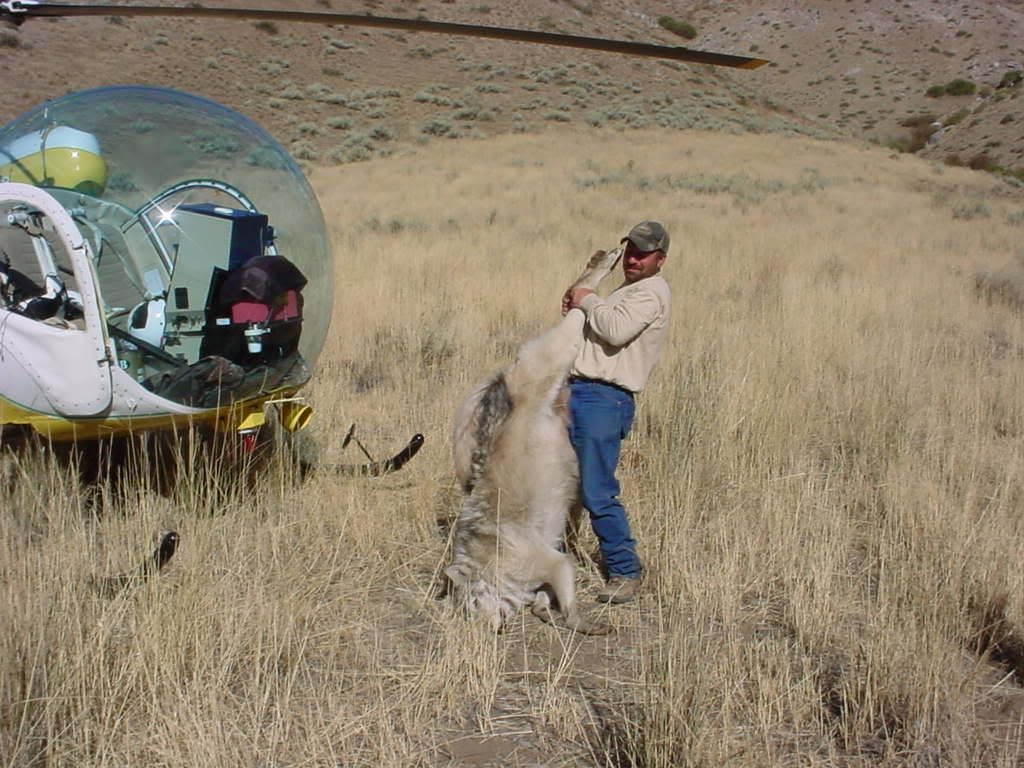 Anyway, here are some excerpts from Wyoming’s proposed plan (regulated to the nth degree):
Anyway, here are some excerpts from Wyoming’s proposed plan (regulated to the nth degree):
WYOMING GAME AND FISH COMMISSION

Utah is first out of the chute:
————————————
Must apply by Jan. 31
Applications for 2008 Utah big game hunting permits will be accepted until Jan. 31. You can apply through the Internet (wildlife.utah.gov) until 11 p.m. on Jan. 31.
You can also apply over the phone at (801) 538-4700. Phone-in applications will be must be received no later than 5 p.m. on Jan. 31.
For more information, call the Utah Wildlife Administrative Services office at 1-800-221-0659, the nearest Division of Wildlife Resources office or the DWR’s Salt Lake City office at (801) 538-4700.
This Monster Muley buck was apparently shot right off the road. The hunter didn’t bother to go after it, but after talking to his friend, they decided it might be worth going back to look for it. According to folklore a number of people knew about this buck and planned on killing it, including some holders of Arizona Governer’s tags.